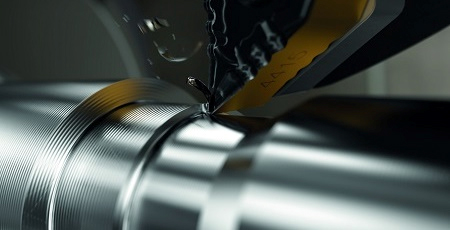|
Companies that manufacture automotive components, for instance, could face either high or low demand scenarios going forward
|
|
|
|
Dear [FIRSTNAME],
Companies that manufacture automotive components, for instance, could face either high or low demand scenarios going forward. Low demand scenarios require tools that can produce more pieces per edge, while providing process security with fewer component rejections. |
|
TOP STORY |
 |
|
 |
Bringing down cost-per-part
As a survey by the US National Association of Manufacturers (NAM) showed that 53% of manufacturers expect COVID-19 to affect their operations, manufacturers are under even more pressure to be competitive — including in mass production that involves tough steel components. Here, Rolf Olofsson, Product Manager at Sandvik Coromant, the global leader in metal cutting tools, examines how an alternative approach to steel turning operations help optimize their costs-per-part, and overall profitability. More... |

|
TECHNICAL HIGHLIGHT |
 |
|
|
Q&A with TRUMPF Singapore regional director laser division
Markus Lindemann, Regional Director Laser Division, Sales & Technology from TRUMPF Pte. Ltd Singapore, gave a speech, titled: Laser technology in E-mobility, during the recent Virtual ASEAN Automotive & Motorcycle Parts Manufacturing Summit. In his speech, Markus talked about the most important laser application producing components for e-cars. He explained that E-mobility requires new production technologies for serial production of the e-car components. More...
|
|
|
Joint shafts in the automotive industry
Ball cages are made in over 80 different versions. Automobile manufacturers often outsource variants with low unit quantities and lot sizes to suppliers,” says Robert Keller, Director Stamping Technology at Karl Klink GmbH. That presents a great challenge to these companies. “For one thing, these suppliers have to do tool changes, significantly lowering machine availability and raising costs,” reports Keller. More...
|
|
|
|
|
Machine tool sector in trying times brings profitable opportunities
Dr Hans-Martin Schneeberger, President of CECIMO, underlined that the coronavirus pandemic has deeply shaken many economic sectors across the world, from services to manufacturing. However, he ascertained that European machine tool builders are still at the forefront in production of reliable and quality machines for other sectors and can still provide new technological solutions. More...
|
|
|
Dedicated hybrid transmission
The electrification of the drive system is the most important technological pioneer for clean, locally emission-free and highly efficient mobility. In addition to battery-powered electric vehicles, electrification also enables hybrids. In hybrid drive trains, the electric drive system works in a close team together with the combustion engine, offering major global benefits in reducing the CO2 fleet emissions of a manufacturer. More...
|
|
|
New concepts shaping the future of mobility
New mobility concepts are shaping the debate about the future of mobility – but not the everyday reality of most people, for whom the car is still part of day-to-day mobility. As part of Mobility Study 2020, people in Germany, France, the USA, Japan and China were surveyed about mobility habits. Continental Mobility Study 2020 shows global trend toward own cars.
More...
|
|
|
Turning instead of grinding
The diamond tool manufacturer in Hanau achieved a technological breakthrough in machining hardened steels with a hardness starting from 58-60 Rockwell (HRc). The development of new CBN cutting materials like the types B610 and B600 used by LACH DIAMANT met the demand of the automotive and component industry for a cutting material with long-term stability for the turning of hardened steels – and this with highest surface qualities of e.g. Ra 0,1 µm.
More...
|
|
|
|
|
|
|
|
|
|